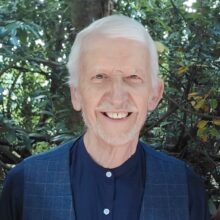The self (‘I’ and ‘my’) lands on objects, voluntarily or involuntarily. Primary objects of interest include forms, feelings, perceptions, formations of mind/speech/body and consciousness (mindfulness, awareness, concentration and meditation). The self also grasps onto people, places, goods etc. When ‘I’ and ‘my’ becomes involved in one or two areas to take up, it is not involved in other objects of interest. A whole life can be spent living under the spell of self – self-interest, self-help, self-enquiry, self-acceptance, self-compassion etc.
The resolution to the deep question Who am I? never concludes with an answer starting with “I am…..” This response only expresses a view. There is a much greater depth to realize than that.
Various responses to the question may arise. It is worthwhile as a daily exploration to keep digging deep with the question in daily life.Yes, there is the danger of reinforcing the ‘self’ with the question Who am I?. The question can take you beyond ‘I’ and ‘my.’
You might conclude with conviction that you are the mind/body process. If so, there is no liberation, no end to suffering.
You might conclude that you are not the mind/body process. If so, there is no need for practice, for meditation or the path.
You might conclude that there is no self. If there is no self, you can do what you like to another since they are only elements. There is nobody there to hurt or harm.
Useful links
Favourite Quotes of Sri Ramana Maharshi (1879 – 1950) of Tiruvannamalai, south India
Four Tips for Practice
- Who am I? ask the question slowly several times in a meditative posture.
- Do not look for a response. It has to come to you.
- Regard body and states of mind as objects of interest. You are not the object of interest
- You are not the subject (consciousness), which objects shape

